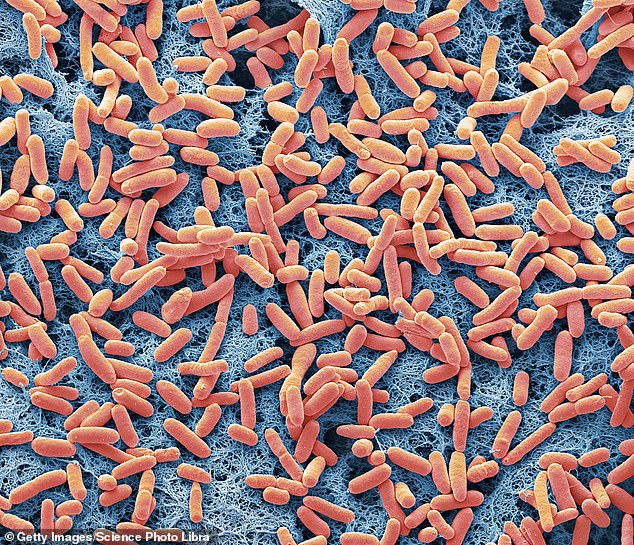More than half of dogs carry antibiotic-resistant superbugs in their diarrhea that easily spread to humans, study shows
More than half of dogs harbor an antibiotic-resistant superbug that can easily be transmitted to humans, a new study shows.
A team of Chinese scientists has discovered that most dogs suffering from diarrhea are carriers of multi-resistant strains of Escherichia coli (E. coli), an intestinal bacteria that does not respond to some or all antibiotics.
People infected with E.coli may experience diarrhea, stomach cramps, fever and, in rare cases, kidney failure and death.
The team tested stool samples from 135 dogs that had diarrhea and found that more than 50 percent of the dogs carried the bacteria.
Drug-resistant superbugs are likely becoming more common because of the widespread use of antibiotics in agriculture and medicine, the scientists behind the new work concluded.
Dogs with diarrhea can shed multi-drug resistant E.coli in 5 out of 10 cases, posing potential risks to their human owners.

Your companion animal may carry antibiotic-resistant superbugs: bacteria that cannot be treated with conventional antibiotics.
This overwhelming presence of superbugs among companion animals could accelerate the emergence of new drug-resistant diseases in humans, the scientists wrote.
According to the World Health Organization (WHO), superbugs kill more than a million people every year. The organization has warned that the planet is heading towards a ‘post-antibiotic’ era.
As many as half of multi-resistant infections actually are acquired in hospitalas shown by a large-scale study.
A post-antibiotic era would essentially turn back time and place us in an era where a simple surgery or abrasion could become a life-threatening medical emergency.
And according to the new study, dogs may play a role in the spread of these dangerous bacteria.
Scientists took 185 stool samples over a year from dogs that had confirmed cases of diarrhea.
Dogs that had used antimicrobial medications of any kind within the previous three months were excluded to ensure they received a relatively unchanged view of their bacterial content.
The team then extracted and cultured the E. coli bacteria from the samples, ending up with 135 bacteria that they grew in dishes for further testing.
They then tested 16 different antibiotics, consisting of six categories of drugs, on each sample to see which were effective.
Between 59 and 76 percent of the samples contained bacteria resistant to an entire class of drugs.
Specifically, 59 percent of samples were resistant to sulfonamides, 64 percent were resistant to tetracyclines, and 76 percent were resistant to beta-lactams.
These three classes include the most commonly used antibiotics.
“The widespread use of antibiotics has significantly led to the increase in (multidrug-resistant) E. coli isolated from companion animals,” wrote the team from the College of Veterinary Medicine of Sichuan Agricultural University.
Antimicrobial chemicals in everyday items such as hand soap have also been linked to rising numbers of drug-resistant bacteria, as has the use of alcohol and bleach to disinfect homes and hospitals.
Part of what makes E. coli resistant to antibiotics is an accelerated form of evolution: survival of the fittest.

E. coli is a type of bacteria that naturally occurs in our intestines, but also in dogs. But too much of it can make us sick, and E. coli is increasingly resistant to common treatments.

Disinfectants and antiseptics are commonly used in healthcare facilities to clean surfaces, surgical instruments and even the skin. But these can increase antibiotic resistance if they leave behind survivors.
When a dog or human is treated with an antibiotic, harmful bacteria are killed.
But it may not be 100 percent of them.
Those that survive may survive because they have specific genetic variants that give them protection against antibiotics.
When these bacteria survive, they pass on their resistance genes to their offspring.
Furthermore, bacteria can also share genetic material with each other. That means they can give each other resistance genes without even reproducing.
In recent years, restrictions on antibiotic prescribing have tried to improve the situation, but the problem may be too advanced to control, according to the new study.
The high detection rates of (multidrug-resistant) E. coli in our study implied that more effective measures should be taken to control the occurrence and spread of (multidrug-resistant) E. coli in companion animals,” the researchers wrote.
